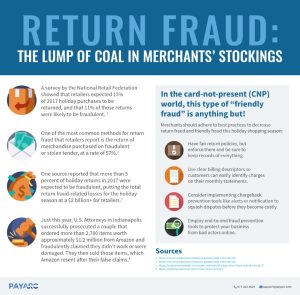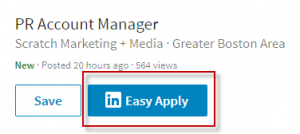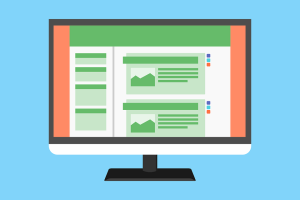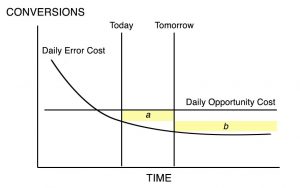Consumer inboxes will likely see a tidal wave of email during the holiday season so let’s dive into a few ways to get noticed.
So many unprecedented things have happened in 2020 that I’m afraid to start listing them in case that unlocks a portal to even more horrors. And we still have four months to go, bringing with it more hurricanes, the U.S. elections, COVID-19 2.0 and – maybe most frightening of all – the holiday shopping season.
Just one of these is enough to strain the typical marketing department. When they all happen at once, even agile marketing might not be enough to get us through.
What can you do? Besides the obvious steps – looking at the data, defining your authenticity, and getting in touch with why people like and engage with your brand – you need to seriously consider what you will do differently this year.
This is a prime example of the need to create a solid, detailed strategy – the “why” – before you can come up with tactics (the “how”) to make it happen. It will take more than just reprinting your holiday 2019 playbook, changing the day you send email or emailing three abandoned-cart emails instead of two.
It is entirely possible that consumer inbox cadence will increase, not by the 20% we generally expect but the 50% that causes a tidal wave of email. How will you get noticed in the middle of that? Let’s dive into a few ways.
1. Forget your focus on the subject line.
When I ask marketers “What do you test?,” most of them say: “The subject line,” and that’s where they stop. This reliance on the subject line throws off the balance of effort you put into creating your message. If the message content doesn’t live up to the subject line, you’re training your customers not to trust what’s inside, and that can doom your open rates.
Focus on what’s inside the message. Yes, the subject line is important. But, think about how we can make your email content resonate more with your customers and differentiate your message from everything else that will descend on your customers’ inboxes in the next four months.
2. Use real-time content to make a difference.
Real-time content has been around for a decade, beginning with video in email, but the adoption rate remains underwhelming at best. RTC had functionality issues in its earlier days, but better browsers and advanced technology offered by companies like Liveclicker, Movable Ink and Campaign-Genius make it a differentiator in today’s market.
My advice: Learn about all the functions these companies can do and brainstorm how you could use it in your messaging. Literally, pile your team into a conference room and write all their functions on a whiteboard. Then, list how you could use each function in your emails. Really think outside of the box on this one. What you could end up with is a differentiated strategy that drives results.
If you haven’t checked out real-time content before, now’s the time to test it. If you don’t differentiate from your competition – and not just your brand competitors but everything else in the inbox – only your loyalists will notice you.
Can your email show where your nearest store is so your customer doesn’t have to click to your website, type in an address and wait for a match? Replace outdated flash sale content with a default or updated offer? Play your latest ad or videocast footage using a video module right in your email? While these are tactics, each one has a business case tied to increasing sales or engagement.
When requesting funds to support this tactic, show this post your boss and explain how it fits into your differentiation game plan.
3. Be prepared for your “screaming down the hall” moment.
If you’ve spent enough time in retail email marketing, you know exactly what I mean. It’s the moment somebody checks the numbers and runs down the hallway to your cubicle, shouting, “We need to send another email!”
Back in my retail days, I would expect this “screaming down the hall” scenario five to 10 times each holiday season. I learned to prepare for them so I would have a game plan ready to go. This season? They won’t be screaming down the hall. It might be a random Zoom meeting where you see the whites of their eyes.
It’s going to happen more. You know I’m right about this.
Panic-driven campaigns can derail your email plan and introduce mistakes because you short-circuit your regular decision-making processes. This year, expect this almost weekly. You can defend against the mayhem by creating default campaigns targeted to preselected segments and using easily updated message templates.
Having these ready-made templates loaded into your ESP, tested and ready to go, lets you rise to the challenge without the usual risks: typos, broken links, wrong offer, wrong segment.
It also gives you leverage. When your boss or a brand manager screams “Send another email!” at you at 4 p.m. on Friday, you can tell them you’re ready to go, but they have to take what you have – no customization. That will send you off to your virtual happy hour that much sooner.
Balance speed to market with what’s achievable. Keep execs informed about how many times people have received these emails and that the email money tree won’t keep yielding without a little investment.
Wrapping up
I’ve seen 20+ iterations of holiday email planning. It has almost always followed a predictable path, until this year. I can’t tell you what’s going to happen. The level of holiday craziness I see regularly is going to explode.
You, as the direct marketer in email, social, web or display, must be prepared for it but also be ready to turn on a dime because no one knows what to expect.
Given the way this year is going, don’t be shocked to see the zombie apocalypse at your door on Black Friday.
Opinions expressed in this article are those of the guest author and not necessarily Marketing Land. Staff authors are listed here.
(37)








